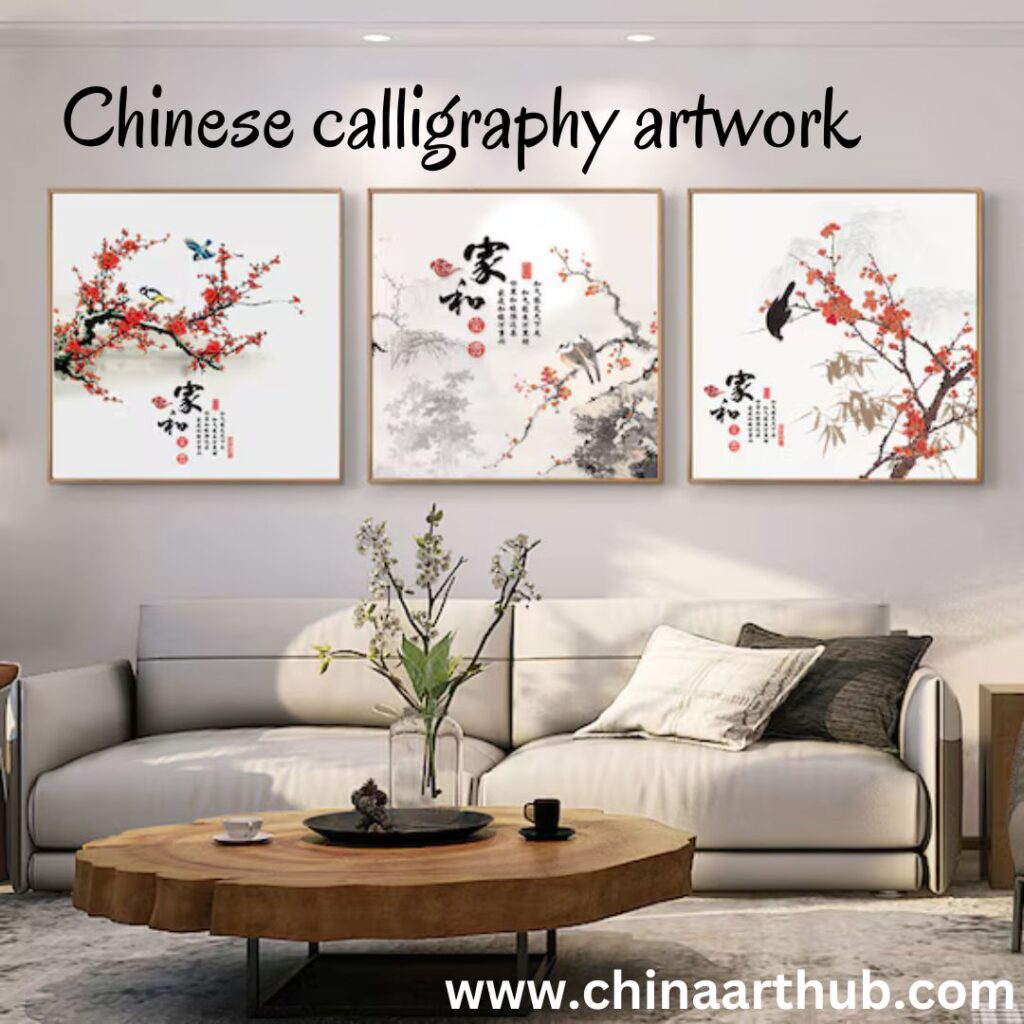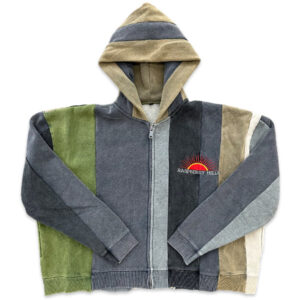
Chinese calligraphy artwork is more than a form of writing—it is an ancient and revered art that embodies culture, history, and personal expression. Each stroke of the brush carries meaning, and every composition reflects the artist’s emotions, philosophy, and even their state of mind. Unlike other forms of visual art, Chinese calligraphy is deeply intertwined with the rhythm of nature, the discipline of the mind, and the beauty of the written language.
A Glimpse into History
The origins of Chinese calligraphy artwork date back thousands of years, evolving alongside China’s written language. It is one of the oldest continuous artistic traditions in the world, with its roots in early pictographs inscribed on oracle bones during the Shang Dynasty (1600–1046 BCE). Over centuries, it developed into various script styles, each carrying its own distinct identity.
Some of the most prominent styles include:
-
Seal Script (篆书) – The earliest form of Chinese calligraphy, used in ancient inscriptions and still popular for decorative art.
-
Clerical Script (隶书) – A more structured form that became widespread during the Han Dynasty.
-
Regular Script (楷书) – The standard form of Chinese writing, widely used in modern times.
-
Running Script (行书) – A semi-cursive style that offers fluidity and personal expression.
-
Cursive Script (草书) – The most abstract and expressive form, where strokes flow seamlessly.
Each script style reflects not just historical evolution but also the aesthetic and cultural shifts within Chinese society.
The Artistic Philosophy Behind Chinese Calligraphy Artwork
In Chinese culture, calligraphy is more than ink on paper; it is a practice of discipline, meditation, and self-improvement. It is often said that a person’s handwriting reveals their character, making Chinese calligraphy artwork a deeply personal art form.
Master calligraphers spend years refining their strokes, balancing power and grace within each character. Unlike printed fonts, handwritten Chinese calligraphy exhibits variations in pressure, brush movement, and ink absorption, making every piece unique. This emphasis on individuality is why Chinese calligraphy artwork is often compared to a dance—where the brush, guided by the artist’s energy, moves rhythmically across the paper.
Tools of the Trade
Chinese calligraphy artwork requires specialized tools, often referred to as the “Four Treasures of the Study”:
-
Brush (笔) – Made from animal hair or synthetic materials, the brush tip affects stroke flexibility and ink absorption.
-
Ink (墨) – Traditionally in the form of ink sticks, ground on an inkstone with water to produce liquid ink.
-
Inkstone (砚) – A smooth surface used to grind ink and mix it with water.
-
Paper (纸) – Special calligraphy paper, often made of rice or mulberry fibers, enhances ink absorption.
Each tool plays a vital role in achieving the perfect balance of fluidity and precision. The choice of materials, along with the artist’s technique, determines the final appearance of Chinese calligraphy artwork.
The Symbolism Within Strokes
Chinese calligraphy artwork is not just about the characters—it’s about the energy within each stroke. The way ink spreads, the movement of the brush, and the spacing between characters all contribute to its meaning. Calligraphy embodies the philosophy of Daoism, which emphasizes harmony with nature and effortless flow.
For example, a calligraphy piece with soft, flowing strokes may convey serenity, while bold, angular strokes may express strength or determination. The rhythm of the brushwork is often compared to breathing—just as inhaling and exhaling must be in balance, so must the strokes of a calligraphy piece.
The Cultural Significance of Chinese Calligraphy Artwork
Throughout history, calligraphy has been a revered skill among scholars, poets, and emperors. It was not only an artistic pursuit but also a mark of education and refinement. During the Tang and Song dynasties, some of China’s most celebrated poets, such as Wang Xizhi and Su Shi, were also master calligraphers. Their works are studied and admired to this day.
Chinese calligraphy artwork is deeply embedded in traditional Chinese culture, appearing on temple walls, scrolls, paintings, and even as inscriptions on historical monuments. It is also an integral part of celebrations, with calligraphers creating banners for festivals like Chinese New Year, inscribing auspicious characters that bring good fortune.
The Modern Appeal of Chinese Calligraphy Artwork
While traditional calligraphy remains highly respected, modern interpretations have brought new life to this ancient art. Many contemporary artists blend traditional brush techniques with digital mediums, creating fusion calligraphy that merges ancient aesthetics with modern design.
Today, Chinese calligraphy artwork is widely used in home decor, branding, and even fashion. Art collectors and interior designers appreciate its timeless elegance, using framed calligraphy pieces to add a cultural touch to homes and offices. Businesses also incorporate calligraphy-inspired designs in their logos and packaging, preserving its aesthetic appeal while reaching a global audience.
How to Incorporate Chinese Calligraphy Artwork into Your Space
Whether you are an art enthusiast, a collector, or someone looking to add an elegant cultural element to your surroundings, Chinese calligraphy artwork offers numerous possibilities. Here are some ways to incorporate it into your space:
-
Wall Scrolls – Traditional hanging scrolls featuring meaningful calligraphy can serve as a focal point in a living room or office.
-
Framed Calligraphy Prints – A framed calligraphy piece can add sophistication to minimalist or modern interiors.
-
Custom Calligraphy Pieces – Personalized calligraphy artwork with your name, a quote, or an inspiring phrase adds a unique touch to any space.
-
Decorative Panels – Wooden or ceramic panels engraved with calligraphy make excellent statement pieces.
-
Tattoo Designs – Many people choose Chinese calligraphy artwork for tattoo designs, selecting meaningful characters that represent their values.
The versatility of Chinese calligraphy artwork allows it to fit seamlessly into both traditional and contemporary settings.
Learning and Appreciating Chinese Calligraphy Artwork
For those interested in learning this art form, practicing Chinese calligraphy can be a rewarding and meditative experience. Beginners can start by using water brushes and practice sheets before advancing to traditional brushes and ink. Mastering stroke order and brush pressure takes time, but with patience and dedication, anyone can develop an appreciation for the beauty of this art.
Additionally, visiting museums and galleries featuring Chinese calligraphy artwork provides insight into historical masterpieces and the evolution of this art form. Many institutions offer workshops and live demonstrations, allowing visitors to witness the elegance of brushwork in action.
Final Thoughts
Chinese calligraphy artwork is a timeless and deeply meaningful art form that transcends mere writing. Each stroke tells a story, reflecting the artist’s emotions, wisdom, and cultural heritage. From ancient emperors to modern designers, calligraphy continues to inspire and captivate audiences worldwide.
Whether displayed as home decor, incorporated into branding, or practiced as a personal discipline, Chinese calligraphy artwork remains a symbol of elegance, tradition, and artistic mastery. Its enduring appeal ensures that this ancient art will continue to be celebrated for generations to come.





